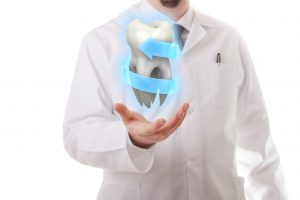
The importance of the specific bacteria to the prognosis of an individual’s case of gum disease was known over 20 years ago. In a 1996 article in the Journal of Periodontology (Renvert et al. J Periodontol. 1996 Jun; 67(6): 562-71.) the authors concluded that the presences of Aa, Pg, and Pi alone or in combination correlated with attachment level changes. The authors further concluded that pathogenic bacteria are better predictors of disease progression than observed clinical signs. In a 2007 article in J Periodontology, Casas et al. noted that microbiologic diagnosis is the only diagnostic procedure that provided information on the cause of a specific case of perio disease. These conclusions are still valid today.
The services and products most commonly applied to periodontal disease include; radiographs, pocket depth measurements, BOP, mobility and all the other clinical signs, ultrasonic and hand scalers, lasers, systemic and locally applied antimicrobials, etc. These along with everything else we bring to bear on every patient with gum disease are all aimed at diagnosing and treating the disease. However, none of them have a predictive, crystal ball property like salivary testing; i.e., they cannot provide insight into the likelihood of disease development.
When a patient comes to our office with periodontitis we have to use all of our tools and techniques to control the disease. Yet if that new or existing patient has gingivitis, we have the chance to provide the most important service we can for them; prevention of periodontitis development and progression. This is the time to be proactive and get a sample of their saliva because identifying the etiologic agents, the specific bacteria, is a better forecaster of disease progression than clinical signs. If any healthcare provider were able to reduce the likelihood of the development of a common chronic infectious and inflammatory disease by simply having a salivary sample analyzed, they would do so. We have salivary testing as a critical tool and are in a position to predict and optimize every patient’s chances for a lifetime of excellent oral and overall health.
For more information on how to become an OralDNA Provider – scan HERE: 
- The Insights Provided by Salivary Testing - December 27, 2019
- I Don’t Need That, We’re Already Getting Good Results - November 29, 2019
- What’s Your Excuse? - August 30, 2019
